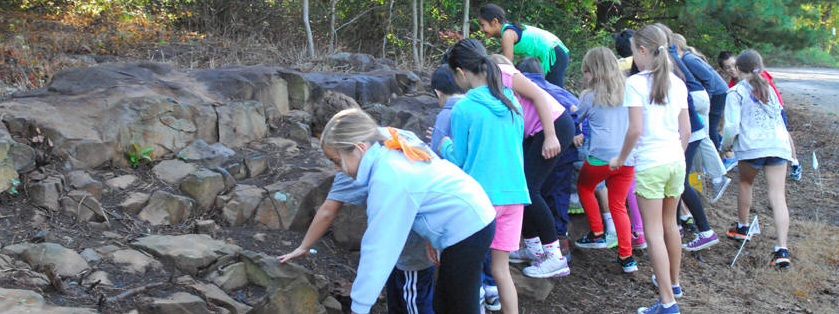About the Trail
This short hike reveals the geological history of the Watchung Reservation.
The trail is about one mile long, and all the stops are marked with corresponding numbers on the trail.
|
"Watchung" is a Lenape word meaning "high hill." The Watchung mountains have an elevation of about 600 feet above sea level. As you travel, these high hills are the last rise before the gently rolling lowland that extends from Rt. 22 through appropriately named towns like Westfield and Plainfield to the Jersey shore. The Watchung Reservation is located in the central part of a large geologic area called the Newark Basin. The rocks were formed about 200 million years ago, during the late Triassic period. At that time, all of the continents were joined into one landmass called Pangaea. Forces deep within the earth caused this super-continent to gradually pull apart, forming the Atlantic Ocean and the continents we know today. The Watchung Reservation began as a broad valley in which multiple layers of mud and sand were deposited. Over millions of years, the layers gradually hardened into sedimentary. As the crust stretched, cracks formed and lava rose through them and spread onto the surface. The lava cooled and hardened into igneous rock. There were three lava flows over a period of several million years. They were separated from one another by layers of sand and mud that eventually compacted to form sandstone and shale. Continued crustal stretching caused the valley to sink further and become tilted to the northwest. As more millions of years passed, the rocks were eroded to produce the surface we see today. The Earth’s climate cooled significantly about one million years ago, causing snow and ice to accumulate and form great ice sheets called continental glaciers. There were four major glacial periods during which the glaciers moved across portions of North America, including northern New Jersey. Soil and rocks of all sizes were frozen into the glacier and carried south as the glacier moved. When the ice melted, these materials settled to the ground to form a blanket of sediments over the surface. The glaciers did not travel much further south than the present day Watchung Reservation.  |